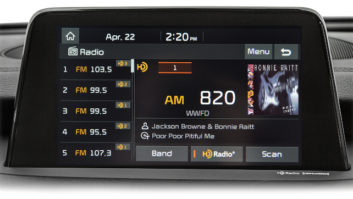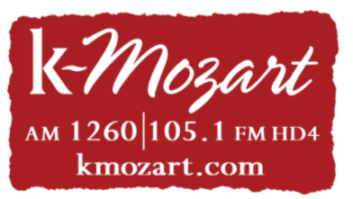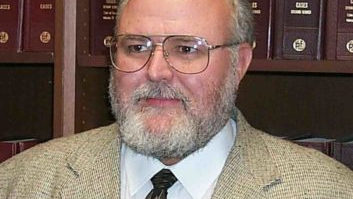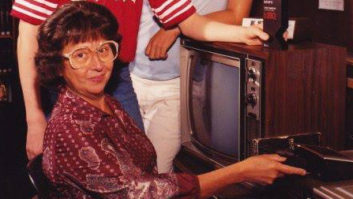Adding Surround Sound to Digital Radio Is Under Serious Debate Worldwide
(click thumbnail)There has been substantial discussion recently on the addition of surround-sound capabilities to digital radio. This issue is being considered by the IBOC and DAB camps simultaneously, both of which have been established as stereo-only formats.
The rationale that this sort of qualitative enhancement would add value to digital radio certainly makes sense, particularly as the deployment of surround listening begins to extend beyond the home-theater environment into cars and other systems. Also, because surround sound is not available on AM or FM radio, it adds unique appeal to digital radio formats. But, like any retroactive enhancement that attempts to maintain backward compatibility, the devil is in the details, and some compromises are inevitable.
With this column, we begin a multi-part exploration of the potential for surround sound in digital radio.
It’s happened before
Recall that both AM and FM radio began life as monaural formats, but were retrofitted for stereo operation after both were well established. Of course, the history of those conversions is quite divergent, with FM’s being extremely successful and AM’s serving as a landmark of how not to regulate an industry. So it’s obvious that the process followed in attempting such an enhancement can have a substantial impact on its outcome.
Policy matters aside, however, there are technical challenges to consider as well. Both AM and FM stereo systems had backward compatibility as a fundamental design feature (as did the similar introductions of stereo audio and color video for television). In general terms, this was accomplished by the addition of an enhancement sub-channel, which would only be recognized by “advanced” receivers with the enhanced reception capability. Existing receivers, or new ones that were not equipped with the enhancement – let’s call them “basic” receivers – would simply behave as the original format dictated.
In the FM stereo case, the broadcast exciter sent a mono sum of the stereo signal to the main audio channel, while a difference signal (i.e., audio not common to both L and R channels) was multiplexed into the FM channel as a 38 kHz AM subcarrier, with a 19 kHz sine wave signal also inserted to synchronize the sum and difference signals during recreation of the discrete left- and right-channel stereo audio signals at the receiver. (The 19 kHz “pilot” also provided a beacon to indicate to receivers and listeners the presence of stereo audio content on the channel.)
This process is probably well known to readers, but what might require a reminder is that this approach also implies two other important elements: 1) Plentiful content must be available to broadcasters in the enhanced format (e.g., stereo music), and 2) Basic receivers will receive a signal that is derived from that enhanced signal (e.g., a mono sum of the stereo program). Therefore the enhanced content that broadcasters air must itself be “compatible” to proper reception in the basic format.
In other words, simply designing a broadcast system that derives an enhancement channel from the original content for delivery to advanced receivers (such as sum-and-difference multiplexed FM stereo) is necessary but not sufficient to claim true backward compatibility. The content carried by such a system must also be originally produced in a way that allows proper listening in both the advanced and the basic format.
Discipline
This was not always the case in early stereo recordings. Some readers may remember when LPs were offered in separate stereo and mono versions (the stereo editions usually sold for about $1 more), and the mono sum of the stereo LPs often sounded quite different from the mono version. Remember also that the mono recording was the definitive version of the artist’s work at the time, while stereo remained a novelty for some time. The well-known Beatles recordings with odd-sounding, hard left/right instrument assignments are a well-known, lasting example of this. At the time, artists and producers would concentrate primarily on the mono mix, often leaving the stereo mix up to the engineers to have fun creating on their own, since most copies sold (and aired) were the mono versions.
As stereo FM broadcasting grew popular, awareness grew for the need of a disciplined, stereo/mono compatible mixing process, in which producers and engineers would check any mix through both stereo and mono monitoring systems. Techniques that resulted in poor mono compatibility (e.g., low-frequency phase differences or inadvertent polarity reversals) were avoided, and other processes that sounded acceptable but significantly different in stereo vs. mono (e.g., spaced stereo microphone pairs or certain artificial reverb settings) also fell out of favor.
Thus over a period of time, all content became truly stereo/mono compatible. Music was released in a single LP format, the so-called 45/45 stereo system, where vertical groove modulation represented the L+R sum, and lateral modulation represented the L-R stereo difference signal. FM stereo broadcasting did essentially the same thing via its L+R main channel and L-R stereo subcarrier.
Occasional incompatibilities still occur on FM, but the preponderance of stereo reception today makes mono issues far less problematic than in earlier times. Nevertheless, the automatic blend feature used for multipath mitigation in many FM receivers often produces monophonic audio (or close to it) when the receiver still indicates a stereo signal is being received, so mono compatibility remains important. And of course, many clock and table radios are still full-time mono FM receivers.
Taking the next step
There have been numerous attempts to move FM beyond stereo in the years since, but none have been successful.
Plans for quadraphonic FM went the way of quad records, stopping before a format was actually established. Later, matrixed surround sound (based on the same technology used in SQ-format quad LPs) launched the home theater revolution, and while this has become extremely popular for the FM audio system used in analog television, it has not done the same on FM radio. Part of this is by design, with the primary purveyor of matrixed surround, Dolby Labs, preferring not to license its decoders to FM receivers, due to concern that poor performance under multipath reception conditions would reflect badly on the surround format’s reputation.
One advantage of the matrixed surround system is its ability to reproduce relatively strong, stable and consistent surround images via four channels of audio, while only requiring two audio channels for storage or transmission (thus the “4-2-4” terminology applied to such systems). This is particularly true of matrixed surround systems that feature enhanced “steering logic” circuitry in decoders, such as Dolby Pro Logic.
Matrixed surround systems use quadrature encoding of front/rear difference information onto the stereo signal, which provides another layer of backward compatibility to audio signals, allowing a single mix to produce acceptable results in surround, stereo or mono listening – again, assuming the creative-stage mixing follows appropriate rules.
For reasons noted above, matrixed surround has never taken hold in FM radio, but the multipath resistance of digital radio could allow its addition to IBOC or DAB systems without difficulty. Just such an approach has been proposed and successfully used in some cases, although no commercial products actually target this application as yet. (“Some assembly required” for digital radio matrix-surround listening today, requiring feed of an IBOC or DAB receiver’s analog stereo output to an outboard surround decoder.)
It is unclear whether future IBOC receivers will ever incorporate surround decoders, due to their reliance on analog FM as a back-up signal. Receivers could be designed to disable surround decoding when the IBOC receiver falls back to analog FM, but receiver manufacturers might not want such a dramatic shift to occur in such cases.
In any case, this discussion is now being eclipsed by a desire to move radio beyond matrixed surround into more recently developed 5.1-channel discrete surround. We’ll look at proposals for doing this in a backward-compatible way next time.













